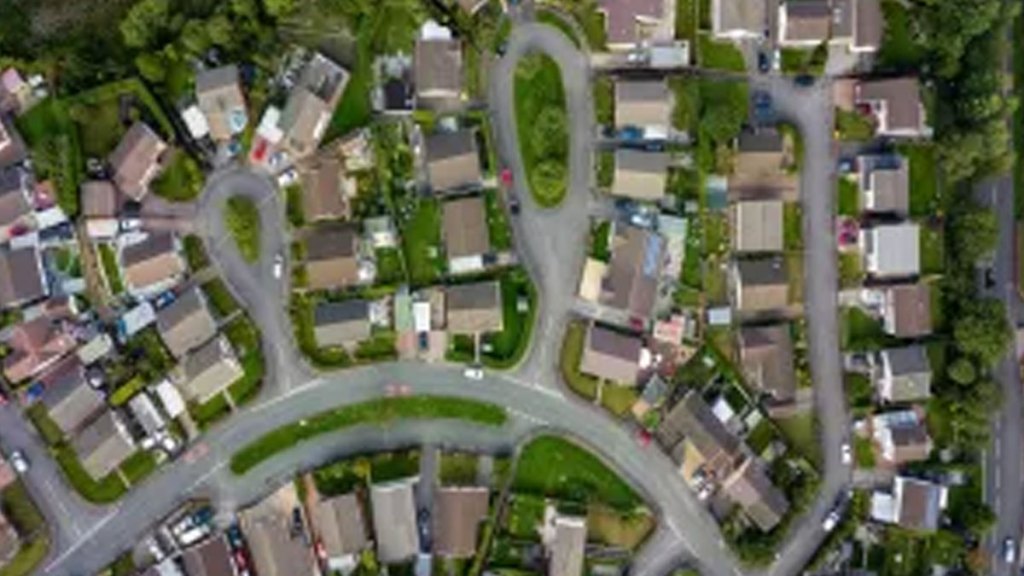I see a fork in the road coming in the real estate industry.
I see it when I drive far out from cities, in places they used to call “the country,” and observe extensions of suburban sprawl. Housing developments, office parks or bunches of retail buildings have sprouted like wildflowers.
This kind of growth was viewed favorably by many people when it began in post-World War II North America, but decades later, many see it as an unfortunate interruption of vast fields and wooded areas. Some still call it “progress,” while others mourn the loss of natural beauty.
And I wonder at what point does this nature-wrecking development mindset stop?
I know this criticism goes against the grain in real estate thinking; you develop and build all you can wherever you can to succeed and create wealth. It’s a, “If you build it, they will come” mentality.
But if we continue developing the same way we have for decades, expanding ever outward, paving over and uprooting precious native areas, we increase our environmental perils and, at the same time, increase the distance between ourselves and our neighbors.
We’ll drive farther out to live, increase our dependency on fossil-fuel-burning automobiles, and feel further disconnected from nature in soulless developments that economically are a burden on towns and cities. That mindset has led to the phrase we know today as “ghost towns.”
In the long term, it’s not sustainable. But the other road we can take at that fork can provide a brighter and cleaner path for the future. This path veers toward a future that prioritizes the revitalization of cities and the repurposing of underutilized and neglected buildings. It advocates for more walkable neighborhoods, common-sense environmental standards, and the introduction of more mixed-use and transit-oriented developments.
Welcome to the new urbanism movement.
Real estate geared to the greater good
The new urbanism mindset is about seeing the potential in revitalization, and how that can help both the environment and more people. It’s a means for all of us to render a service to our communities.
It addresses, in a logical way, how we continue building and developing with stewardship, equity and responsibility. It means healthy living for people sociologically, and economic prosperity with an emphasis on high-quality open space landscape.
In an era when climate change is an ever-growing threat and more people are environmentally conscious, new urbanism is an argument against continued development in nature and the harmful environmental effects that causes.
New urbanism focuses on fostering intelligent growth. It’s a planning and development approach that creates a sense of community, including pedestrian-friendly blocks and streets, shopping and housing in close proximity, and accessible public spaces. Mixing a variety of residential, office, medical, retail, restaurants and entertainment creates a place where people want to live, work, play, and stay.
New urbanism emerged in North America in the 1980s and has become a movement as a counter to suburban and urban sprawl. New urbanists advocate for neighborhoods to be diverse in use and population and for a balanced creation of jobs and housing.
Another aim of new urbanism is to remove the dependence on cars and promote a mentally and physically healthy lifestyle while bringing more people together.
Underutilized building types add potential housing density and increase affordability, which is a major problem for many people in North America. Real estate agents today will need to adopt the new urbanism movement as we have a responsibility to help out in the housing crisis and create ways for families to afford homes.
There is always better value in resale than in new construction, and your biggest gains in real estate are when you change the use of a property, creating more intensified built forms. This is new urbanism in action.
Back to the future
One of the new urbanism’s draws for me is quality trumping quantity. Being a developer shouldn’t be like playing Monopoly, striving to wantonly fill the board and build on every lot we land on.
New urbanism causes us to look back at the way we used to live and encourage a sense of purpose toward how we should be living. And pragmatically, it makes business sense when you consider these are the kinds of properties and projects that local planning boards and officials are likely to support.
Back before urban planning changed dramatically following World War II, most towns were built around centralized hubs and most residents lived and worked in close proximity to each other. Towns and cities were created in this fashion for centuries. All that required mixed-use buildings and the frequent revitalization of existing structures.
The urban sprawl phenomenon created a seemingly endless expanse of gated communities and single-family homes, a priority of vehicular traffic over public transportation or walking, and life has become more fragmented. We seemed to have moved further away from each other with each subsequent generation.
New urbanism does not advocate that we move backward, as some people have argued. It doesn’t seek to slow the growth of new developments farther from town, but rather to promote more responsible developments.
And so, what is the correlation between wealth creation and new urbanism for real estate agents? Simply put, developing a new urbanism mindset, which is a passion for me, is big business for real estate agents.
Adopting the new urbanism mindset is simply a smart business decision. You will look at properties differently, not so much on what they are today, but what they can become. You will come to learn why today’s current zoning bylaws, provincial or state policies, and official plans were written the way they were.
You will learn how to create intensified built forms, severances, and legalized axillary units in single-family homes. You will assemble properties to change their use and intensify, retrofitting old homes, selling the worst house on the street in the best location, which is not a relatively new concept but more prevalent today than ever before. You will truly learn how to make money when you buy real estate.
I argue that today’s real estate agents who do not embrace the new urbanism movement will fall behind in terms of how to create substantial wealth for their clients and themselves. It’s going to be virtually impossible to be a successful real estate agent or developer in the years ahead if you fail to embrace the new urbanism movement because it’s going to dominate urban planning for decades to come.
Dean Artenosi, author of Onwards And Upwards: Discover The Reality Of Building Real Estate Success, is the co-owner of Coldwell Banker The Real Estate Centre in Ontario, Canada.





